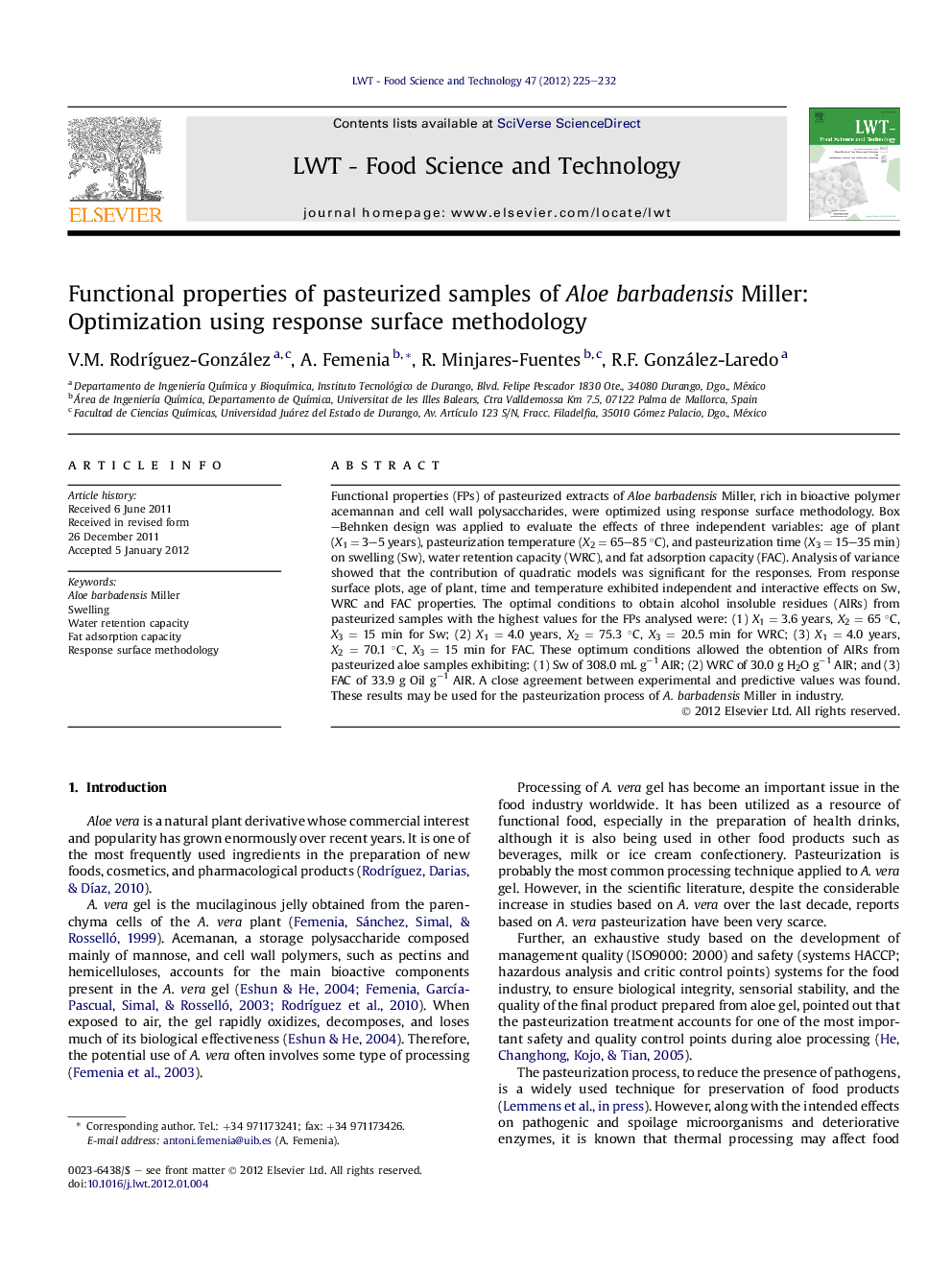| کد مقاله | کد نشریه | سال انتشار | مقاله انگلیسی | نسخه تمام متن |
|---|---|---|---|---|
| 6405526 | 1330919 | 2012 | 8 صفحه PDF | دانلود رایگان |

Functional properties (FPs) of pasteurized extracts of Aloe barbadensis Miller, rich in bioactive polymer acemannan and cell wall polysaccharides, were optimized using response surface methodology. Box-Behnken design was applied to evaluate the effects of three independent variables: age of plant (X1 = 3-5 years), pasteurization temperature (X2 = 65-85 °C), and pasteurization time (X3 = 15-35 min) on swelling (Sw), water retention capacity (WRC), and fat adsorption capacity (FAC). Analysis of variance showed that the contribution of quadratic models was significant for the responses. From response surface plots, age of plant, time and temperature exhibited independent and interactive effects on Sw, WRC and FAC properties. The optimal conditions to obtain alcohol insoluble residues (AIRs) from pasteurized samples with the highest values for the FPs analysed were: (1) X1 = 3.6 years, X2 = 65 °C, X3 = 15 min for Sw; (2) X1 = 4.0 years, X2 = 75.3 °C, X3 = 20.5 min for WRC; (3) X1 = 4.0 years, X2 = 70.1 °C, X3 = 15 min for FAC. These optimum conditions allowed the obtention of AIRs from pasteurized aloe samples exhibiting: (1) Sw of 308.0 mL gâ1 AIR; (2) WRC of 30.0 g H2O gâ1 AIR; and (3) FAC of 33.9 g Oil gâ1 AIR. A close agreement between experimental and predictive values was found. These results may be used for the pasteurization process of A. barbadensis Miller in industry.
⺠Response Surface Methodology to optimize functional properties of pasteurized Aloe vera extracts. ⺠Swelling, water retention and fat adsorption capacities were the responses used for optimization. ⺠Age of plant, pasteurization temperature and heating time were the variables optimized. ⺠Polysaccharide extracts obtained under optimal conditions exhibited the highest values. ⺠The models obtained could be used to optimize the pasteurization process of Aloe vera in industry.
Journal: LWT - Food Science and Technology - Volume 47, Issue 2, July 2012, Pages 225-232